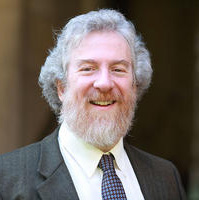Prayer: Invitation and Outcry

October is Domestic Violence Awareness Month (DVAM), with many organizations and agencies working together to spread awareness and the understanding that this scourge is endemic in modern society—and that no religion and no sector of society is exempt. My friend and colleague Rabbi Lisa Gelber, associate dean of The Rabbinical School of The Jewish Theological Seminary, was invited by FaithTrust Institute to write the “Universal Prayer” for the call of unity that opened DVAM, and the National Resource Center on Domestic Violence (which convened the call) then created artwork to frame the prayer on a flyer. The prayer has found wide acceptance and recognition.
Why is it that these sentiments cast in the modality of a prayer have a more compelling power for many than an address, a speech, or a printed essay? I believe that the answer here is important, and underlies much of our engagement with liturgy and ritual. For many, prayer is a different form of communication than speech or rhetoric. Prayer—unlike even the most eloquent sermon, speech, or essay—invites and even demands us to utter the words, pronounce the statements, ask the questions.
Rabbi Gelber might have penned an essay expressing the hope that those who see violence against women as endemic would have their eyes opened. But her prayer has each of us demanding action from God. Rabbi Gelber might, like any leader, exhort followers to find strength to carry on the work each day, but her prayer compels each of us to seek that strength as a blessing from God.
Placing in our hands and hearts the words of a new prayer-text, Rabbi Gelber has challenged us to join our voices, hearts, and souls together; to become partners with God to eradicate this scourge from our nation and from this world. Let us turn to her words:
Holy One of life and love,
Bless us with the strength to greet each day with energy and purpose as we work to eradicate sexual and domestic violence and terror. Grant us the wisdom to recognize stumbling blocks for what they are and the creativity to maneuver our way around them.
Open the eyes of those who see violence against women and children as inevitable outcomes of the world in which we live; let them hear the cries of those in need; widen their hearts to hold the many faces of those in this world and beyond who demand our unending support; call forth compassionate words of change from their mouths and commitment to acts of justice and transformation from their hands.
Draw us together as a community of diverse narrative, culture and history, offering support through our presence and intention. Remind us that we are not alone . . . we are not alone.
Help us to engage in intentional practice of thanksgiving; let us be grateful for the accomplishments of those who came before us, the progress we have made and the prospect of a brighter tomorrow. When we are tired and veer towards complacency, stretch out Your hand and re-ignite the passionate fire for divine humanity that lives within.
You, who rolls away the darkness into the light, send us forth as messengers, truth tellers and witnesses to illuminate what is and demand with fortitude a world of safety and respect for women and children in body, mind and spirit.
Just as the dove found an olive branch in the receding flood waters, so too may we find signs of peace and the potential for hope and renewal. May that time come speedily and in our day.
And let us say,
Amen.
Further information and resources concerning domestic violence can be found at www.nrcdv.org/dvam.
As always, I am interested in hearing comments and reflections on these thoughts about prayer and liturgy. You may reach me at sabarth@jtsa.edu.



